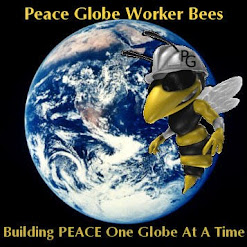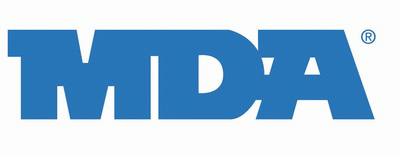Battle of Midway, 4-7 June 1942
Posted: Sunday, June 07, 2009 by Travis Cody inYesterday was the 65th commemoration of the Allied invasion of the Normandy beaches on 6 June 1944, D-Day. But lest we forget, there was fierce fighting in the Pacific during World War II as well. Ending the war would require sacrifice in both theatres.
The surprise attack on Pearl Harbor by the Japanese on 7 December 1941 stunned the United States and marked our entry into World War II.
The Doolittle raid on Japan on 18 April 1942 raised the morale of Americans at home, proving that the Japanese homeland was reachable.
From 4 June through 7 June 1942, the battle for Midway Island devastated the Japanese fleet and proved that the reach of American of air power on board aircraft carriers was the way to begin the long process of dislodging the Japanese from the Pacific. If the Japanese campaign to invade Midway had succeeded, they would have been able to threaten US holdings in the Pacific right up to the west coast.
Here are some of the American heroes of the battle. Commander Joseph J. Rochefort (1896 - 1976) was in command of Station HYPO (at Pearl Harbor), working to break Japan's highest level communication code, JN-25. Commander Rochefort was convinced in early May that the Japanese had targeted Midway Island. He and his team, in conjunction with other crypto-analysts at Station CAST (Cavite, in the Philippines), OP-20-G in Washington (NEGAT, "N" for Navy Department), and with the assistance of the British, decrypted enough of the JN-25 code to begin speculation about objective A-F. Rochefort started to think that objective A-F could be Midway Island based on earlier communications that mentioned it. He devised a phony message about the base's fresh water supply and had this message sent to Midway, from where it was then sent in the clear as an emergency alert. Japanese listening posts intercepted the traffic, sent the message to their headquarters, and Station HYPO was able to confirm that A-F was indeed Midway. This intelligence was critical to getting enough naval strength in position northwest of Midway in enough time to thwart the attack, as well as to put the Midway garrison on alert. Search planes were out early and in force, and spotted the Japanese task force in time to launch Midway's fighters to get in the way of the first strike.
Commander Joseph J. Rochefort (1896 - 1976) was in command of Station HYPO (at Pearl Harbor), working to break Japan's highest level communication code, JN-25. Commander Rochefort was convinced in early May that the Japanese had targeted Midway Island. He and his team, in conjunction with other crypto-analysts at Station CAST (Cavite, in the Philippines), OP-20-G in Washington (NEGAT, "N" for Navy Department), and with the assistance of the British, decrypted enough of the JN-25 code to begin speculation about objective A-F. Rochefort started to think that objective A-F could be Midway Island based on earlier communications that mentioned it. He devised a phony message about the base's fresh water supply and had this message sent to Midway, from where it was then sent in the clear as an emergency alert. Japanese listening posts intercepted the traffic, sent the message to their headquarters, and Station HYPO was able to confirm that A-F was indeed Midway. This intelligence was critical to getting enough naval strength in position northwest of Midway in enough time to thwart the attack, as well as to put the Midway garrison on alert. Search planes were out early and in force, and spotted the Japanese task force in time to launch Midway's fighters to get in the way of the first strike. Workers at Pearl Harbor completed repairs and got a heavily damaged USS Yorktown fit for combat within 72 hours of dry docking her, allowing her to join USS Hornet and USS Enterprise in the battle. Yorktown had taken a bomb through her flight deck during the Coral Sea battle. She fared better than USS Lexington during that action. Lady Lex took two torpedoes in her side and three bomb hits. An explosion finally rendered her dead in the water and she was sunk by USS Phelps. But Yorktown managed to limp back to Pearl Harbor, arriving on 27 May 1942. Experts estimated it would take three months to get her back in fighting trim, but workers swarmed her decks and made her seaworthy and fit for action in under three days. Yorktown sailed for Midway on 30 May, augmented by planes and crews from USS Saratoga.
Workers at Pearl Harbor completed repairs and got a heavily damaged USS Yorktown fit for combat within 72 hours of dry docking her, allowing her to join USS Hornet and USS Enterprise in the battle. Yorktown had taken a bomb through her flight deck during the Coral Sea battle. She fared better than USS Lexington during that action. Lady Lex took two torpedoes in her side and three bomb hits. An explosion finally rendered her dead in the water and she was sunk by USS Phelps. But Yorktown managed to limp back to Pearl Harbor, arriving on 27 May 1942. Experts estimated it would take three months to get her back in fighting trim, but workers swarmed her decks and made her seaworthy and fit for action in under three days. Yorktown sailed for Midway on 30 May, augmented by planes and crews from USS Saratoga. Pilots and aircrews of PBY search planes made first contact with the Japanese task force on 3 June. They spotted minesweepers about 470 miles out from Midway, and then a short time later they saw the invasion force. A PBY torpedo strike force made the only successful American torpedo attack in the early morning of 4 June, but did little real damage. Later that morning, PBY's spotted the Japanese carrier force about 200 miles out from Midway. They were able to alert Midway to the approach of the bombers to the island so that the Americans could get their own fighters in the air from the airbase. It seems plausible that the menace and distraction of Midway's alerted defenses were enough to keep the Japanese pilots from destroying the airfield. The early alerts certainly saved lives, allowing Marines and Sailors to get to bunkers and man anti-aircraft defenses.
Pilots and aircrews of PBY search planes made first contact with the Japanese task force on 3 June. They spotted minesweepers about 470 miles out from Midway, and then a short time later they saw the invasion force. A PBY torpedo strike force made the only successful American torpedo attack in the early morning of 4 June, but did little real damage. Later that morning, PBY's spotted the Japanese carrier force about 200 miles out from Midway. They were able to alert Midway to the approach of the bombers to the island so that the Americans could get their own fighters in the air from the airbase. It seems plausible that the menace and distraction of Midway's alerted defenses were enough to keep the Japanese pilots from destroying the airfield. The early alerts certainly saved lives, allowing Marines and Sailors to get to bunkers and man anti-aircraft defenses. Commander John C Waldron (1900 - 1942) led Torpedo Squadron 8 (VT-8), a flight of 15 Douglas TBD Devastators, from the deck of USS Hornet on 4 June. VT-8 was the first carrier squadron to make contact with the Japanese carrier force. Regrettably, they were unable to coordinate their attack with fighter cover. They bravely took their slow dive bombers in anyway, facing a full fighter umbrella of Japanese Zeroes, and every plane was shot down. Only Ensign George Gay (1917 - 1994) survived. The attack did no damage, but did disrupt the crucial fighter umbrella. Torpedo Squadron 6 (VT-6) made a run at the carriers after VT-8, to little effect and at great cost. Of 41 TBDs, only 4 planes were left after the battle. They were simply too slow, too poorly armored, and without self-sealing fuel tanks. But don't ever doubt the bravery of the men who flew them.
Commander John C Waldron (1900 - 1942) led Torpedo Squadron 8 (VT-8), a flight of 15 Douglas TBD Devastators, from the deck of USS Hornet on 4 June. VT-8 was the first carrier squadron to make contact with the Japanese carrier force. Regrettably, they were unable to coordinate their attack with fighter cover. They bravely took their slow dive bombers in anyway, facing a full fighter umbrella of Japanese Zeroes, and every plane was shot down. Only Ensign George Gay (1917 - 1994) survived. The attack did no damage, but did disrupt the crucial fighter umbrella. Torpedo Squadron 6 (VT-6) made a run at the carriers after VT-8, to little effect and at great cost. Of 41 TBDs, only 4 planes were left after the battle. They were simply too slow, too poorly armored, and without self-sealing fuel tanks. But don't ever doubt the bravery of the men who flew them.
 Lt Commander C. Wade McClusky Jr. (1902 - 1976, left) was air group commander on USS Enterprise, and led Fighting Squadron 6 (VF-6). Lt Commander Maxwell Leslie (1902 - 1984, right) led Bombing Squadron 3 (VT-3) from USS Yorktown. His squadron also flew off Enterprise. Low on fuel, McClusky and Leslie kept up the search for the Japanese carrier force on 4 June. The risk paid off with VF-6 and VT-3 able to coordinate their attack as they arrived above the carriers with the decks full of refueling aircraft, most in the process of being refitted for sea action against the American carrier force. Munitions were stacked on deck. The dreaded Zero fighter umbrella was scattered and too far below patrol altitude. VF-6 and VT-3 zoomed in and scored bomb hits on three of the four carriers, setting them aflame. Two sank before sunset and the third was sunk during the night.
Lt Commander C. Wade McClusky Jr. (1902 - 1976, left) was air group commander on USS Enterprise, and led Fighting Squadron 6 (VF-6). Lt Commander Maxwell Leslie (1902 - 1984, right) led Bombing Squadron 3 (VT-3) from USS Yorktown. His squadron also flew off Enterprise. Low on fuel, McClusky and Leslie kept up the search for the Japanese carrier force on 4 June. The risk paid off with VF-6 and VT-3 able to coordinate their attack as they arrived above the carriers with the decks full of refueling aircraft, most in the process of being refitted for sea action against the American carrier force. Munitions were stacked on deck. The dreaded Zero fighter umbrella was scattered and too far below patrol altitude. VF-6 and VT-3 zoomed in and scored bomb hits on three of the four carriers, setting them aflame. Two sank before sunset and the third was sunk during the night.
The Americans scored a decisive victory over the Japanese during the Battle of Midway. The US lost 340 men killed. 145 aircraft were destroyed. USS Yorktown was sunk, as was the destroyer USS Hamman.
The Japanese lost 3,057 men killed. 228 aircraft were destroyed. The heavy cruiser Mikuma was sunk. Most importantly for the US war effort was the sinking of four Japanese aircraft carriers...Akagi, Kaga, Soryu, and Hiryu.
For an excellent recounting of the battle, please click here. Another summary can be found here.

















Mahalo Trav. As usual so inspirational and moving. Aloha